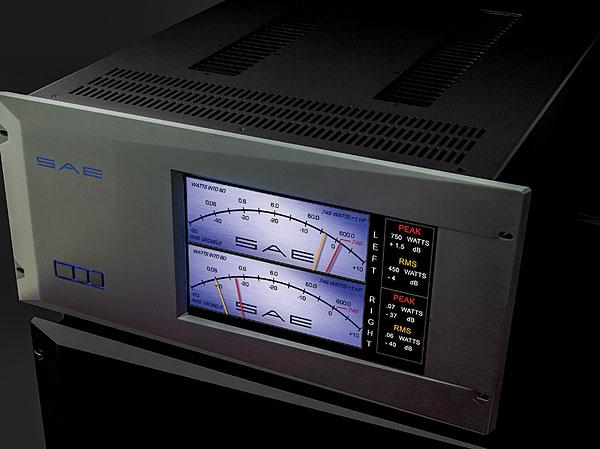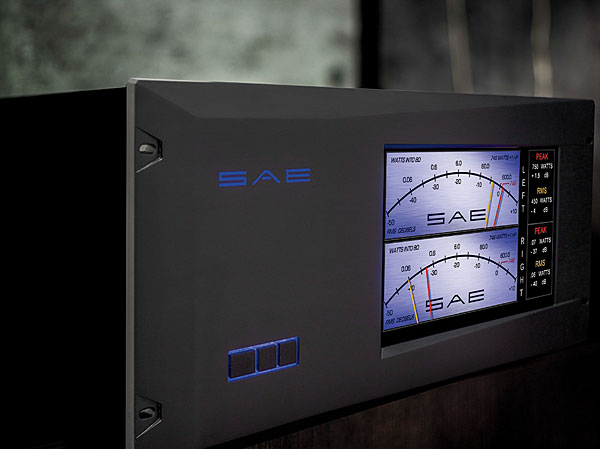Mother of All Amplifiers: The SAE 2HP-D

Indeed, with an all-channels-driven output of 2 x 600 watts into 8 ohms from 20 Hz-20 kHz (2 x 746 watts at 1 kHz) and 2 x 1,200 into 2/4 ohms—all with less than 0.01 percent total harmonic distortion— satisfying the demands of whatever you throw at this beast won’t be a problem. And with a signal-to-noise ratio that kisses 130 decibels, you won’t have to worry about hiss intruding on even the most delicate of musical passages. The mission behind SAE’s new flagship was simple and ambitious: To build “the best two-channel amplifier in the world,” a project that took nearly a year to complete. No wonder the amp costs $19,995.
Whereas most of today’s high-end power amps are “fully differential, balanced designs,” built to cancel noise common to the dual amplifiers used for each channel, Kessler went much further, reducing the 2HP-D’s circuitry to a single input stage while retaining a dual-differential output. While this topology requires current feedback (as opposed to the more common voltage feedback) and dual-servos for DC control, it retains the advantages of a differential design while significantly lowering noise and distortion.

“It required rigorous circuit layout,” explains Kessler, who is famous for his modesty. The amplifier is not only electrically balanced but physically balanced with the central ground point as the fulcrum. “We’re using a four-layer circuit board with two layers for the power plane and one for ground. We even use a solid copper bus-bar to tie the channels together (and provide a common ground).” Performance is further enhanced through the use of ThermalTrak output devices with built-in temperature sensors, which enables the amplifier to be optimally biased in real time regardless of the operating conditions, and a hybrid design that marries convection cooling via massive heat sinks with a (defeatable) auxiliary cooling fan that kicks in when power demand is extreme.
As for those captivating meters: Unlike analog VU meters—which, at best, provide a rough indication of power output—the ones used in the 2HP-D are more akin to the RPM needles used in Ferraris. “The new virtual meters are amazing,” Kessler says. “They have no mass, so we can use two pointers to accurately track and report instantaneous power and average power at the same time.” Talk about mesmeriz- ing. Watch for the first review of the 2HP-D in our sister publication Stereophile, slated for early summer.
SAE • (469) 446-6647 • hear-sae.com





























































